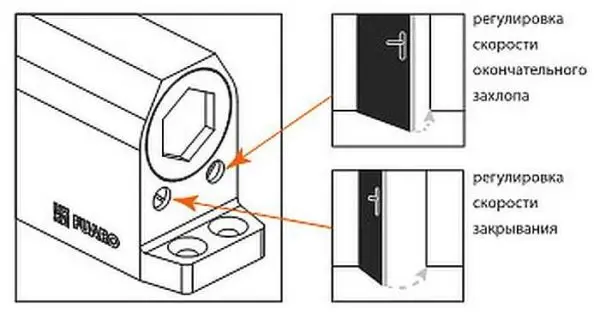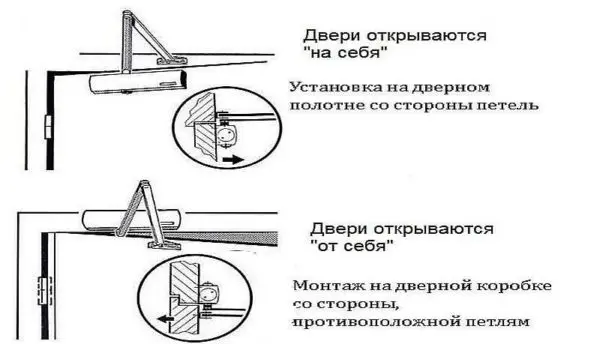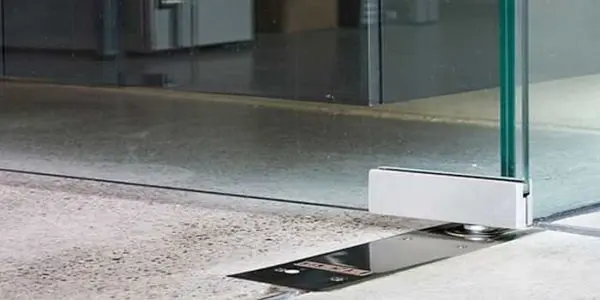Contents
So that the doors do not remain open, they used to use a banal spring, today they put a door closer. Its design is also based on a spring, but it is more powerful, hidden in a metal case and filled with oil – for “braking” when closing. Installing a door closer is a simple task. Self-installation will take 20-30 minutes. Hardly more. So we take a drill and set it with our own hands.
Classification
According to the worldwide EN 1154 standards, door closers are classified according to the closing force they can generate. They are divided into 7 classes, which are designated EN1-EN7. When choosing a class, pay attention to the inertia of the door, that is, to the width of its leaf and weight at the same time. If different door parameters correspond to different classes, a device of a higher class is installed.
| Door closer class | Door leaf width, mm | Door leaf weight, kg |
|---|---|---|
| EN1 | up to 750 mm | up to 20 kg |
| EN2 | up to 850 mm | up to 40 kg |
| EN3 | up to 950 mm | up to 60 kg |
| EN4 | up to 1100 mm | up to 80 kg |
| EN5 | up to 1250 mm | up to 100 kg |
| EN6 | up to 1400 mm | up to 120 kg |
| EN7 | up to 1600 mm | up to 160 kg |
For example, the width of the door corresponds to the class EN2, and the weight – EN4. They put the 4th class, since a weaker effort will not cope with the load.
There are door closers belonging to the same class. The characteristics then indicate the class with one digit – EN5. They have a small range of force adjustment – within the same class. There are devices whose closing force is regulated within several groups. In this case, the range is marked with a hyphen – EN2-3, for example. The latter are more convenient to use – you can adjust the closing speed depending on the weather. But the cost of such models is higher.
Structures and traction device
The main structural element of the door closer is a spring that pushes the lever. According to the method of transferring force from the spring to the lever, there are two types of devices:
- With lever arm. Such models have a characteristic appearance – levers stick out perpendicular to the surface of the door leaf. The same closers are also called with knee or articulated traction. The design works reliably, but the protruding levers are unattractive, and besides, they are easy to break if desired. There is another drawback: as the door opens, more and more effort is required. For children and the elderly, this can be a problem.

with linkage - With sliding channel. In these models, the lever is parallel to the door leaf, which provides a more attractive appearance. Another plus: when opening the door by 30°, the force for further opening becomes much lower. Equipped with such door closers, the doors can be easily opened by both children and the elderly.

with sliding channel
Both of these types consist of two parts: a housing in which the spring is hidden and the force-transmitting mechanism and lever. They are mounted at the top of the door: one part on the canvas, the second – on the box. What-where, depends on the direction of opening. If the doors open “towards themselves”, a case with a mechanism is installed on the door leaf, when opening “from oneself”, a lever is attached. The photo shows a lever type closer, but similar installation rules for models with a sliding channel.
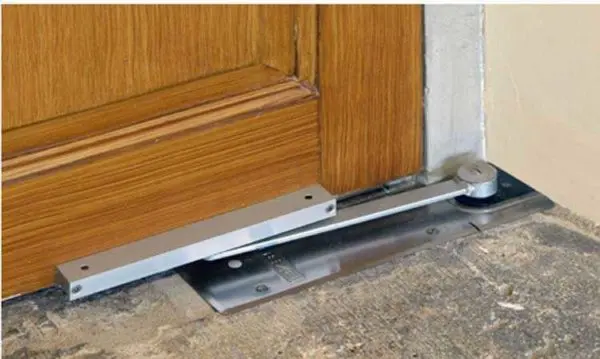
As you understand, they are not suitable for all types of doors – it is problematic to put them on glass ones. For them, there is another design – floor. The case with the mechanism is mounted on the floor, only the holder plate protrudes from above. A similar holder is installed at the top, but the mechanism is far from always there, only for heavy door panels.
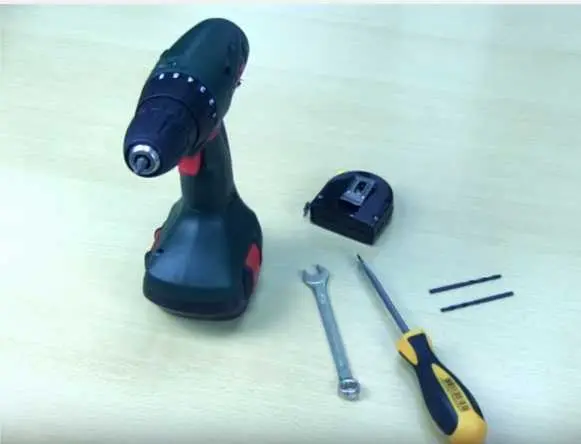
By the way, there are floor models for wooden and metal doors. They also have linkage or sliding channel. They are less conspicuous, but in this arrangement they are more likely to be damaged.
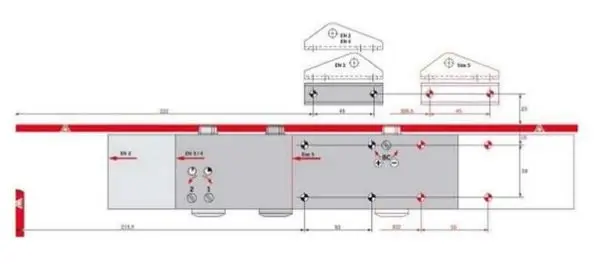
Do-it-yourself installation of interior doors is described here.
Where to put
Basically, closers are placed on external or entrance doors; they can be installed on gates or gates. In the case of doors, they are positioned so that the body is in the room. Although there are frost-resistant models designed for cold exploitation, it is better that the case is protected from the effects of weather conditions. Also, this arrangement guarantees greater safety.
Installing a door closer: instructions with a photo
To mount the closer on the door, you only need a drill, a ruler, a pencil and a screwdriver. A drill is usually required “3” (three), but you need to look at the diameter of the fastener, which usually comes with the kit.
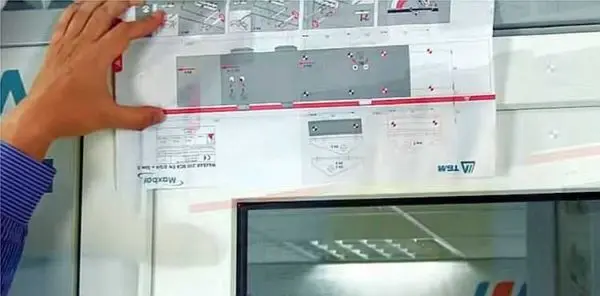
Most of the manufacturers, to facilitate self-installation of the closer on the door, complete the products with installation templates. These templates show the closer parts schematically in full size. They also have mounting holes for each element. In models that can create an effort to open a different class, the holes are drawn in different colors, they are additionally signed – the closer class is placed next to it.
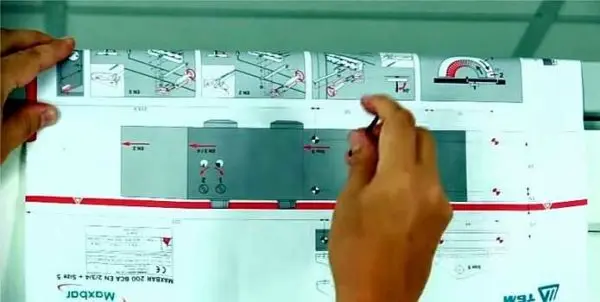
The template is printed on both sides of the sheet. On one side – to open the doors “toward yourself” – from the side of the hinges (pictured above), on the other – “away from you”.
Installing a template
The template has two perpendicular red stripes. We combine the horizontal one with the upper edge of the door leaf, the vertical one with the hinge axis line.
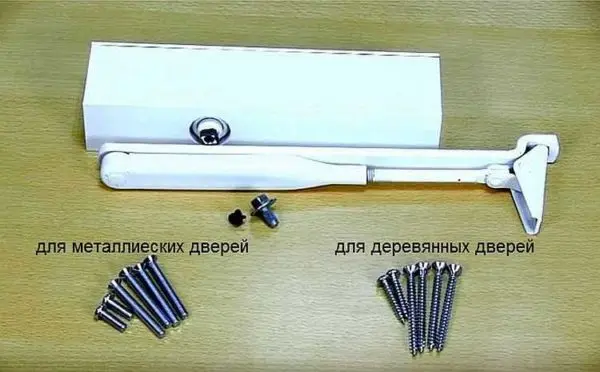
Everything is clear with the upper edge of the door leaf, but in order not to make a mistake during installation, the hinge axis line must be drawn. If a closer is installed from the side of the hinges, there is no problem – using a long ruler and a pencil, transfer the line of the middle of the loops up. If the installation will be carried out on the other side, measure the distance from the edge of the canvas to the middle of the loop. Mark this distance on the other side and draw a line.
Holes for pusher
On the template we find marks for holes according to the selected class. With the help of a drill or an awl, we transfer them to the door leaf and to the frame.
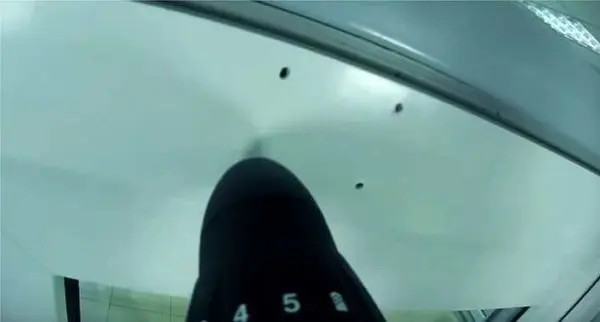
Usually, two types of fasteners are included: for metal (metal-plastic) and wood. We select a drill of a suitable size and drill holes in the indicated places with a drill.
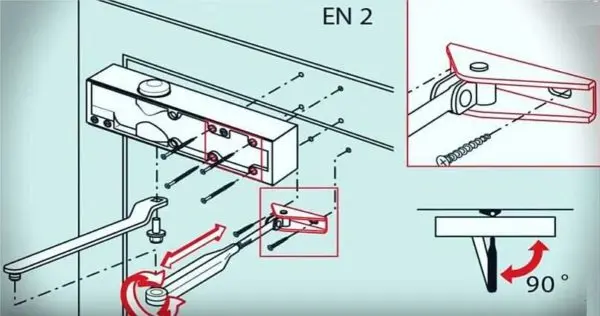
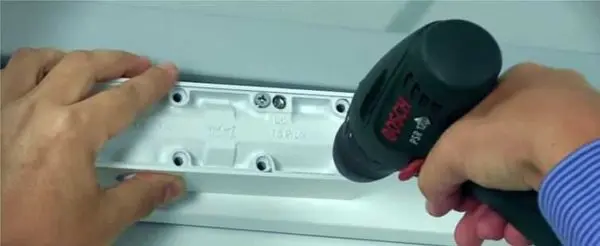
Next, the actual installation of the closer on the door begins. Please note that for installation it is necessary that the body and levers are separated. If they are assembled, they are separated (the washer is unscrewed, the screw connecting the levers and the body is removed).
Installation
We attach the parts to the holes made, install the fasteners. On the diagram we find the class of opening force that we need (in this case EN2) and install the parts as shown in the figure.
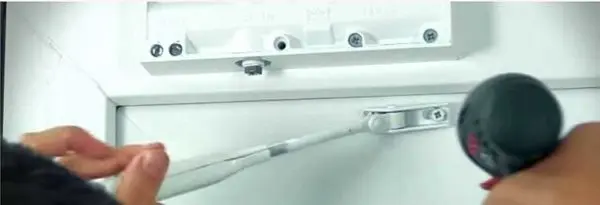
To open “toward ourselves”, we put the case on the door leaf, we install a rod on the box.
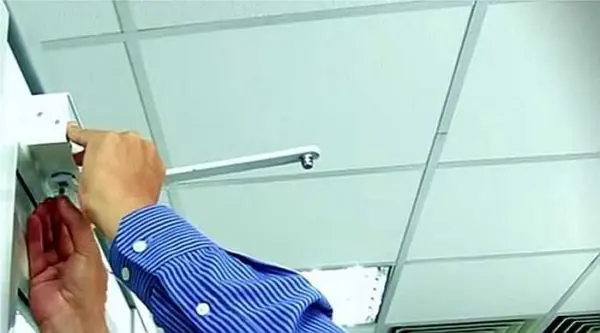
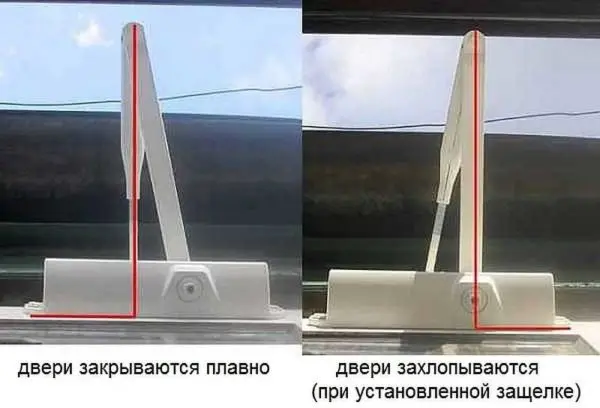
Now you need to connect the thrust lever to the body. There is a special ledge at the bottom of the case. We put a lever on it, tighten it with a screw.
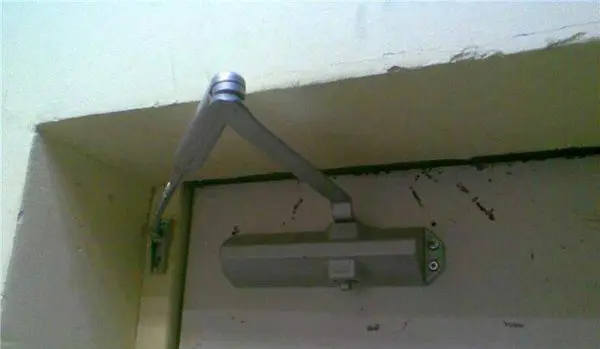
Now it remains to connect the lever with the thrust. There are two options.
Self-installation of the front door is described here.
Connect the lever to the rod
The very connection of the lever with the rod is very simple: two parts are combined, pressed down a little with your fingers. With a slight click, they are fixed. The trick is how to position them relative to the door. The rate of movement of the door leaf at the final stage of closing depends on this. The position can be changed due to the fact that the rod consists of two parts and can be adjusted in length – one of the parts of the rod is a long threaded pin. Rotate the pin and shorten or lengthen it.
If you just need smooth fine-tuning, the thrust is set so that it is perpendicular to the door leaf. To do this, slightly reduce its size (in the photo on the left).
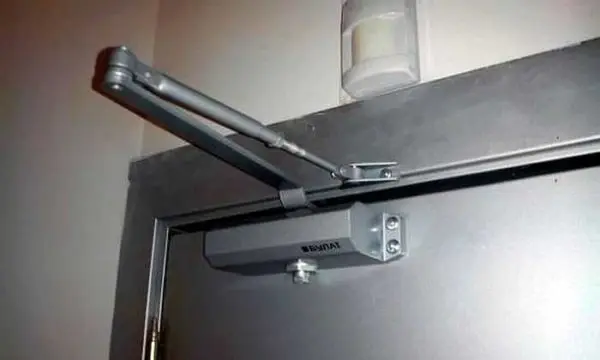
If a latch is installed in the door, a solid force is needed to overcome its resistance. For this option, a shoulder is placed perpendicular to the door (the rod is untwisted, making it longer).
Having exposed the parts accordingly, they are combined and connected. Actually everything, the installation of the closer on the door is completed. And you can handle it with your own hands, and without much difficulty. The final stage remains – setting the closing speed. To do this, you need to understand the adjustments of the door closers.
How to put on a gate
Frost-resistant models that can be used outside are suitable for installation on the gate. But not all gates have a top crossbar. But everyone has side racks. In this case, the rod is attached to the side post by turning the mounting plate along the post.
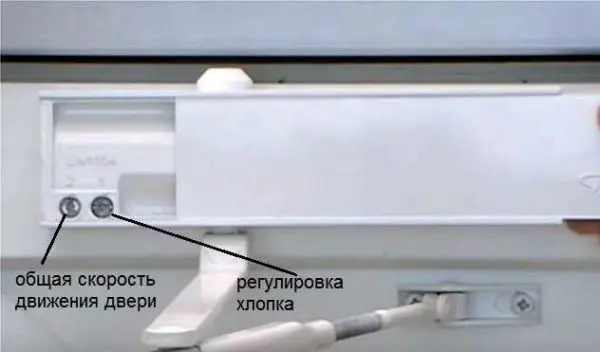
But hydraulic devices (they were discussed in this article) do not feel very good in the cold. The oil that is poured into the body and serves to “brake” the door leaf becomes more viscous, the gate closes more slowly. From this point of view, it is better to choose a pneumatic model for the gate (we read about the choice and installation here).
How to install on a metal door
Mounting the closer on metal doors differs only in the type of fasteners used and the size of the drill. Since the canvas is usually heavier, powerful models of at least class 5 are selected (you need to look at the table). Accordingly, the mounting template will need markup for another class.
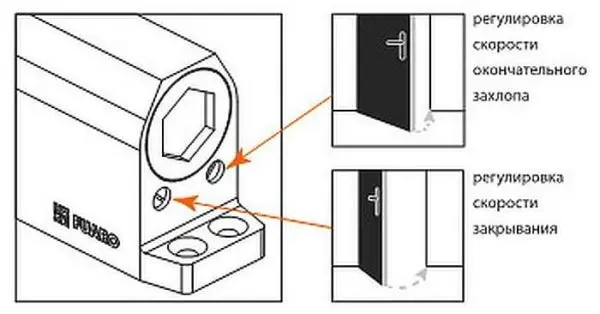
You may also need a more powerful drill, but these are all details. Otherwise, you need to put the door closer on metal doors in the same way as wooden or metal-plastic ones.
Door closer adjustment
The closers that are installed on the doors have a different design and the adjusting screws are located in different places. Exactly everything is indicated in the passport or installation instructions. But, in general, the technique is the same:
- turning the screw clockwise increases the speed/force;
- turning counterclockwise – slow down / reduce force.
When adjusting the door closer, do not turn the screws several turns at once. Often just a quarter of a turn is enough, maybe a little more. Having knocked off the balance by tightening or unscrewing the screws too much, it is very difficult to set everything up again. You can even break the device or make it leak oil from the inside.
Adjustment of speed of opening of a door and “slamming” are on the case. Most often they are either on the front part under a protective cover or on its side surface.

